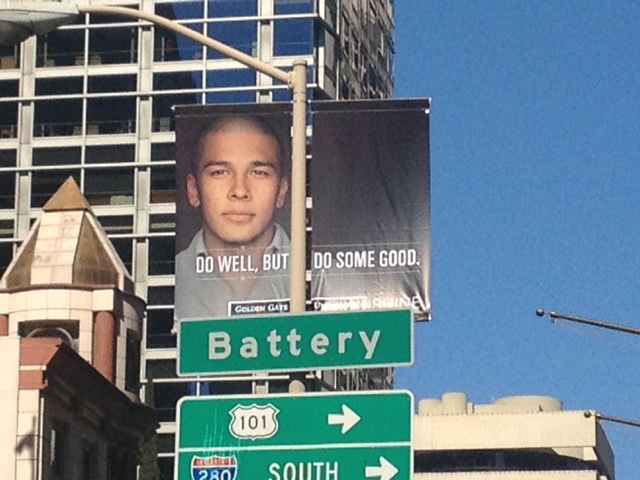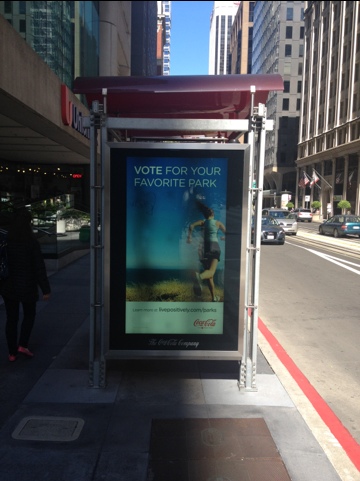We live in a period of unprecedented technological advancement, and the way humans now consume information has never been seen before.
This is the premise on which all modern marketing is founded, and can probably be found somewhere on most marketing services firms’ websites (or the blogs of so-minded commentators). My contention: populist trend-surfing content marketing is its own worst enemy and we’re pre-programmed to ignore it and disengage at the first possible opportunity. Go get a coffee or a beer and let’s discuss.
It’s easy to understand why we are where we are. Marketers buy new. Everyone wants to lead, innovation is one of the most important words that can be used inside an organisation, and therefore when the buyers of marketing services go to market, newness is always the new black. Ergo, the rise in social media marketing specialisms.
Unfortunately, this market-driven demand has the blinkers on.

I wouldn’t mind so much if these things were rose-coloured… Source: My Equestrian World
The latest trend in digital marketing is remembering that the Likes, Pins, Re-Tweets and other shares are all the result of real people performing some kind of measurable behavior. Oh, well done us. But regardless of the collective light bulb going on, a deeper issue remains, and it’s this:
Despite the shift in the way content propagates, the physiology of the end user has not.
Why is this important? Well, a couple of reasons. Firstly, desire is an emotional state, and our emotions are regulated by a complex array of neurochemicals coursing throughout our bodies. To over-simplify, our brain and adrenal cortex are very keen to have a say in how much we want something. It makes not a jot of difference where the idea about wanting something comes from – the ability to stimulate a neurotransmitter is channel neutral. This is why you can still buy porn in print form.
Secondly, humans are complex organisms that take years of study to even begin to understand. In a former life I did a bit of that, although I certainly haven’t written any textbooks on the topic.
What I did find fascinating though is the eternal struggle between our DNA and our physiology. To massively over-simplify in a way that would lose you marks on papers, DNA is primarily interested with replicating itself. It’s how we grow – cells divide and divide and divide, and we get bigger. Its double-helix design is fundamental to its ability to divide and replicate. Physiology, on the other hand, happens at a much higher level of functionality. You effectively have to develop specialised organs in order for physiology to happen, and when it happens, physiology is about maintaining homeostasis. Literally “staying in the same state”, although the process is a dynamic one.
An example of this is your ability to metabolise alcohol – your body breaks down the chemical compound, turning it into calories that are either used or stored, and due to alcohol’s effect on anti-diuretic hormone, compounded by how much heat you generate getting rid of the stuff, you dehydrate and end up with a hangover.

Not only didn’t I wake up with Bradley Cooper, I think I forgot to enter my footy tips… Source: getfityou.com
The only remedy is rehydration, which has to come from outside the body in order to help restore proper balance.
The fundamental truth is that our bodies default back to a position of acclimatised comfort at every possible opportunity, and as we grow, so we absorb the changes our surroundings present to us. Every stunt for an adrenaline junkie is more extreme than the last, because that’s how they get the next high. Jumping motorbikes over busses isn’t seen as a precursor for knitting scarves for a reason.
This digression is important when we think about the world of marketing in an increasingly frantic world of communication inputs.
Great marketing is disruptive. I know this for a fact, because everyone I ever have a meeting with tells me so. Except for subliminal marketing, which is creepy and weird but fun for lots of other reasons.

This image of Brad Pitt from the movie Fight Club is guaranteed to increase both your likelihood of learning about subliminal marketing, and improve the traffic to this blog post.
The problem with disruptive marketing is that your entire physical being is built/designed/evolved to neutralise the disruption as quickly as possible, and return your physical self to a state of normalcy. That’s your physiology working. Spike the adrenaline, increase your heart rate, breathe a bit faster, get a head rush, metabolise the neurotransmitter, take a few deep breaths, reduce your heart rate, see Katie walk past the water cooler, get distracted and forget all about the amazeballs new video your friend just shared on Facebook. At this point the only difference between a share or a Like, and not doing that, is whether something more interesting happens in the seconds immediately after your experience of the marketing.
And if you don’t believe me, look yourself in the eyes and tell yourself about the time you forgot to Like something on Facebook, and spent three hours trawling back through your newsfeed just so you could go back and do it.

No. This is not a neurotransmitter.
So how does this all interlink?
Think about the concept of screening – basically, developing an increasingly sophisticated ability to ignore things you’re not interested in. This is one of the reasons behind the need for marketing to be disruptive in the first place. Screening is essentially a form of mental homeostasis. With each disruptive experience, we go through the process of being interested, excited, engaged…and then we move on. As we move on, our brains adapt to each of these experiences, expanding our mental library of experiences and recalibrating “normal” as it applies to us.
Here’s the rub. Screening has been around for as long as we have been able to consciously believe or disbelieve information we receive second-hand. Even older than that is our ability to chase positive stimuli, and avoid negative stimuli. Such as fire, pain, or paying taxes to Prince John.
The upshot of this is really simple. In order for disruptive marketing to continue to work, the disruption must be increasingly powerful in order to break through the now-increased tolerance of any given individual. It must also be increasingly pleasurable in order to qualify as a positive reward. Think how long video games now play for – the intensity of play escalates the longer you play, and the barrier to entry is barely low enough so as not to dissuade you from continuing after your first try or two. This is why the marketing industry now focuses on the internet – its newness means it’s easier to surprise and delight someone online than it is with a TVC.
Further to this, the volume shift of marketing activity online means that as an industry we’re power-loading the internet with ever-increasing content volumes. We’re actually making a rod for our own backs in doing so, because from a physiological perspective all we’re really doing is training people to ignore ever-more-clever marketing techniques. While content always was, still is, and always will be more important than the channel, we’re making it harder to develop “good content”, on the basis that every time someone neutralises themselves against a given campaign (note this is not necessarily a conscious thing, but a physiological response to increasing exposure to campaigning), then it makes coming up with the next cool thing even more challenging.
What’s more important though is that, as Steve Rubel says, while content is infinite, time and attention are not, and this is the really important implication of this post (so stay with me, I know it’s a long one).
As the average consumer is exposed to an increasing volume of content, that consumer’s ability to screen out unwanted content will increase. It’s what our physiology is hardwired to do. And as each of us does that, we will increasingly self-select the content we do want to be exposed to – based on what stimulates a significant enough emotional response that the brain chemicals start squirting about.

The end result of what is scientifically known as having your brain chemicals squirting about.
Think about how many of your friends you have hidden on Facebook – you don’t want them to know you hate all their irrelevant posts about baby’s first bowel motion, so you don’t de-friend them, but you screen out the content by hiding their updates. With increasing content, increasing screening will follow, and those platforms that don’t moderate the amount of chaff amongst their content will find users disengaging from them entirely. We are engineered to seek comfort with occasional stimulation, not stimulation with occasional comfort.
Because of this fundamental truth in how our bodies work, any innovation in communication technology will drive one universal behaviour: information consumers will increasingly self-select their content for that which is personally relevant or interesting, regardless of trend. The trend we witness from the sidelines will be the result of this biological behaviour – Facebook is only big because a lot of people got onto it. It didn’t attract a billion users by being big in the first place.
Let me be clear, this new form of channel surfing played out by the marketing industries will offer content of value. But because the industry follows the channels, content pushed out into these channels will be perceived to be of lower intrinsic value to the user than content they seek out for themselves.













